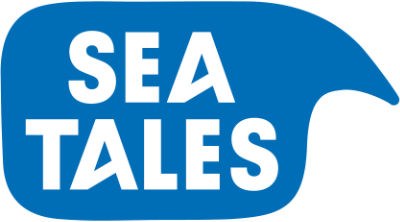FAQ
Got a question? We’ve already answered the frequently asked questions for you.
Sustainability
> What does ‘pole and line’ mean?
It might be hard to imagine that in the professional fishing industry a lot of fish is still being caught with a traditional fishing rod. But fishing with a pole and line is the most sustainable way of tuna fishing: overfishing is practically impossible when you catch fish one by one. Moreover, fishing with a pole and line reduces bycatch, and creates more employment: you need a lot more fishermen than when you catch with a net. By exclusively selling pole and line tuna, Sea Tales contributes to maintaining fishing communities. You can read more about actual pole and line fishing here.
> What do we need to know about farmed fish?
Obviously, we at Sea Tales love wild fish, no discussion about it. However because the supply of wild fish is not in line with the demand, we also collaborate with fish farms. Of course, not just any farm will do: our farmed fish sticks to the strictest of regulations and are always fair and certified. This way we are positive that the farmers with whom we work have the right living- and working conditions.
> How can you guarantee fair seafood?
Because we only work with fishing communities that handle the ocean in a conscious manner, we know all our seafood was caught fairly. Also, all our packaging has a MSC-or ASC certificate. When you see that on the packaging, you know you’re making a responsible choice.
> You sell tuna, but isn’t that an endangered species?
It’s true that we have to be very careful with our tuna intake. The bluefin tuna and bigeye tuna are on the verge of being extinct for many years now. But there are also kinds that you can eat worry-free – well, only if they are caught with a pole and line and are MSC-certified. And you’ve guessed it: this is the case for all our tuna products. You can read more about it here.
Transparency & quality
> The fishermen displayed on the packaging, do they catch all the fish themselves?
The fishermen on our packaging symbolize the fisheries we work with. They’re not working alone, but are the representatives of their own fishing community.
> Do you know all the fishermen on a personal level?
Our founder Bart van Olphen visited all the fisheries we collaborate with. So yes, he knows all the fishermen personally. Not only is this an important part of our transparent production chain, it also validates that all our fishing communities fit our mission and vision.
> Are there any artificial additives in your products?
All our products are free of (unnatural) E-numbers and synthetic flavor enhancers. Also, we don’t use any artificial additives to enhance color, scent or taste.
> What’s the difference between Maxine’s salmon and Johnna’s?
Maxine’s fishing community supplies our keta salmon, and Johnna and coworkers our sockeye salmon. The difference between the two kinds are the color and taste: sockeye salmon has a deep red color and is full flavored, whereas keta salmon is more soft, smooth and clear. Obviously, both are tasty in their own way.
> How long can I keep an opened can of fish?
On all our products you can see two expiry dates: one for closed and one for opened products. In general an open can of fish can be kept in the fridge for two days.
> Where can I buy Sea Tales products?
At the moment we only sell our products at Whole Foods & Stop & Shop, and several retailers in Europe.
> What actions does Sea Tales take against worms in fish?
Many wild fish eat parasitic worms. You don’t really have to worry about this: if the fish has been warmed up (70 °C) or frozen (-20 °C), it kills the worms. Still, when processed the fish is always extensively checked. At Sea Tales we have a very structural approach to this, with an intensive visual inspection, and we assess every fish on color, appearance and texture. Small deviation? Then they get declined. This is the only way to guarantee a high standard for our complete assortment.
> What are the small glass-like crystals that are occasionally found in canned seafood?
Abbreviations
> MSC
… means Marine Stewardship Council, which you might recognize from the blue logo on our sustainable seafood products. The MSC-mark is globally recognized as the only independent label for wild, sustainably caught fish that adheres to the standard fishing rules by the Food- and Agriculture Organisation of the United Nations (FAO) and the International Organizations for Sustainability Standards (ISEAL). Fisheries get the seal of approval when they can show that they don’t overfish, limit the environmental damages and meticulously document their catch. Here you can read more about the seal.
> ASC
… means Aquaculture Stewardship Council. Whereas the Marine Stewardship Council (MSC) makes insightful which fish are 100% fair, the ASC does the same for farmed fish. ASC-certified products come exclusively from fish farms that can show they work with respect for nature, their employees and the local communities. Here you can read more about the seal.
> FAO
… means Food & Agriculture Organisation of the United Nations: the Food- and Agriculture Organisation of the United Nations. This organization strives for everyone on the globe to have access to nutritious food. Every fish that’s caught in the wild must have a FAO-code. With this code you know where and when your fish was caught. Here you can read more about FAO.
> IPNFL
… means International Pole & Line Foundation. This organization shows the advantages of traditional rod fishing, because this is the most sustainable and selective method of fishing. Here you can read more about IPNLF.

